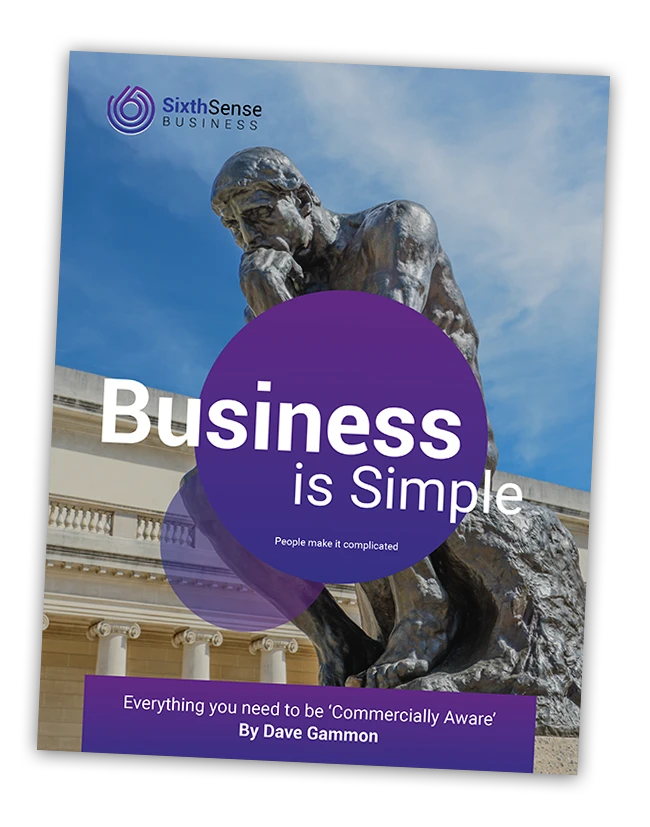
It should be immediately apparent from the title that I’m not a great believer in goal setting or New Year resolutions. That may seem a little odd coming from someone who has made it their life’s work to help small companies and their leaders perform at the highest level possible.
It is heresy in the world of Business Coaching and Consulting to suggest such things. Goal setting has become so ingrained in the collective psychology of the personal development world that no one seems prepared to challenge it.
I am not only happy to challenge it, but I am also prepared to set out a more powerful alternative way to start your year.
This is not just idle lazy opinion or deliberate controversy. It is grounded in the experiences I have had in coaching highly successful Small Business Owners (most of whom have never set a goal in their life).
Goals (and resolutions) don’t motivate.
The only thing that I really look for when coaching clients is that they are taking action in a direction that will give them either a desired outcome or data from which they can adjust their approach.
Goals themselves do not motivate action, even when it looks like they do. The most famous justification for goal setting is a Harvard Study that found that the 3% of graduates who had written goals earned more than the other 97% combined, just ten years after graduation.
It’s bollocks. The study never happened, and no research has ever proved a link of this nature.
The reality is that most (not all) people are not primarily motivated to take action (particularly if they perceive it to be difficult) to attain a desired future goal. Their motivation to act is strongest when they are moving away from a bad situation.
That’s where the generalisation ends, though. We are all unique individuals with a unique way of perceiving situations and a unique cognitive framework, within which we make decisions about what we will and won’t do.
I’ve found the best way to approach motivation to action is to create a level of tension in the system that drives action.
I don’t mean tension in a negative sense. Think of a sailing ship as it turns into, and then catches, the wind. Everything tightens in the system, and it propels forward. That’s what I mean by tension.
The tension to create action in your business will come from a unique combination of the following five factors:
· The clarity, desirability, and perceived distance of your outcome
· The extent to which your current position pisses you off or not
· The presence of a logical and achievable next step, or steps
· Your expectation of success or failure
· Your perceived ability to deal with obstacles as they occur
All of this requires a process of data gathering and some intense thought; it’s not a five-minute job.
Calibrating your goals.
Where do your goals come from? They come from ideas you have about some future position you want to hold and how you see the commercial reality of where you are.
Your perception of your market and your company, the ideas you have, the outcomes you think you want, the decisions you make, and the actions you will or won’t take.
All these things are heavily filtered by your personal mythology, the uniquely personal cognitive model of yourself and the world that you have built in your head.
The reality is that your decision making is distorted and limited by your sense of identity, values, and belief systems.
I’ve made it my business to acquire the knowledge and skills to help you calibrate your perceptions of what is possible in your business and fine-tune your action blueprint.
This process of calibration:
- removes the limitations you place on yourself and your company
- challenges you to explore data that you are ignoring or distorting in your thinking
- fine-tunes your plan of action
A few degrees of distortion and error here can mean huge opportunities for higher performance, better results, and a more enjoyable experience of running your company are missed.
So instead of trying to plunge into your goals, here is my four-step plan for your January (of course, I am assuming that you will keep business functioning as usual in the background while you carve out time for this).
1: Numbers – Spend some time reviewing where you have come from and where you are in terms of sales, margins, cash, costs, and customers. Close analysis of the ratios and trends can yield powerful insights and ideas.
2: Talk – Get off your backside and speak to your customers, suppliers, team, and advisers. See if you can identify significant market shifts and new waves to ride. Also, make sure that your perception of your company reputation is shared by the people whose perceptions matter.
3: Think – Diary in some time for deep thinking. Go somewhere that you enjoy spending time with a pad and a pen. Reflect on what you really want, where you are now, what would need to be done to bridge the gap and what actually stops you.
4: Engage – With me, of course. Use me as your opportunity to challenge, calibrate and tune your thinking and commercial blueprint for the year.
I’m a great believer in the Carpenters Rule; measure twice and cut once. So, I don’t believe spending a month out of the year to get yourself grounded and crystal-clear on your Commercial Blueprint is anything other than the optimum way to underwrite your year; one month of planning and eleven months of execution.
